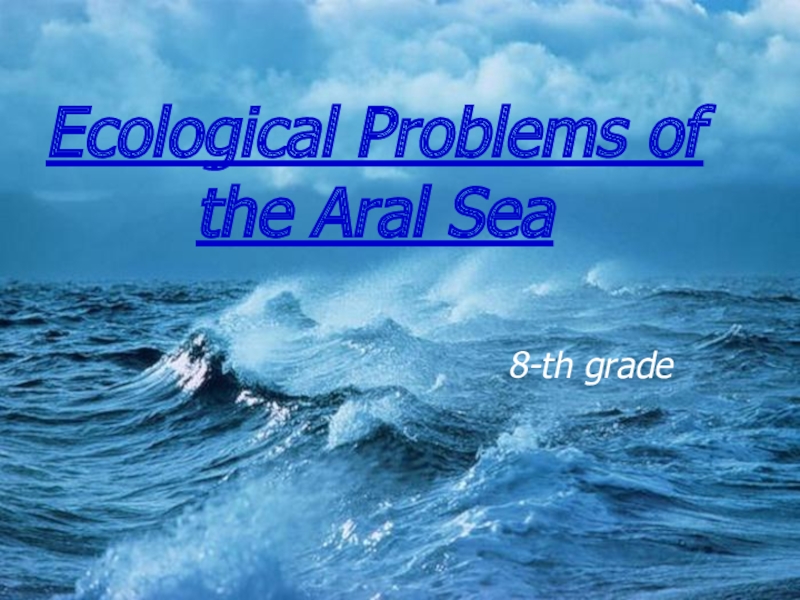group 3Л-17 has executed
Lavrikova Alina
- Главная
- Разное
- Образование
- Спорт
- Естествознание
- Природоведение
- Религиоведение
- Французский язык
- Черчение
- Английский язык
- Астрономия
- Алгебра
- Биология
- География
- Геометрия
- Детские презентации
- Информатика
- История
- Литература
- Математика
- Музыка
- МХК
- Немецкий язык
- ОБЖ
- Обществознание
- Окружающий мир
- Педагогика
- Русский язык
- Технология
- Физика
- Философия
- Химия
- Шаблоны, фоны, картинки для презентаций
- Экология
- Экономика
Презентация, доклад на тему Экономика Канады 2
Содержание
HistoryEven before Europeans arrived in Canada, the Portuguese and Scandinavians were already fishing in the Atlantic Ocean, not far from the modern province of Newfoundland and
Слайд 2 History
Even
before Europeans arrived in Canada, the Portuguese and Scandinavians were already fishing in the Atlantic Ocean, not far from the modern province of Newfoundland and Labrador.
At the beginning of the European colonization of Canada, the main source of income was hunting and trade in hides. The British settled in the north and northwest of Canada, in the modern provinces of British Columbia, Alberta, Saskatchewan, Manitoba and in the present territories of Nunavut, the Northwest Territories and the Yukon. This vast, very sparsely populated area (no more than 300 European inhabitants) was operated by the Hudson's Bay Company. At the same time, in the east of Canada, where the provinces of Prince Edward Island, New Brunswick, Nova Scotia, Ontario and Quebec are now located, the French settled. This territory was known as New France.
French and English merchants explored this area and engaged in trade exchange with the poor tribes of Algonquins, Iroquois, and Hurons, changing such useless items as glass balls, as well as household utensils and metal tools for animal skins. Other merchants preferred to directly hunt animals, the skins of which were subsequently sold in Europe.
At the beginning of the European colonization of Canada, the main source of income was hunting and trade in hides. The British settled in the north and northwest of Canada, in the modern provinces of British Columbia, Alberta, Saskatchewan, Manitoba and in the present territories of Nunavut, the Northwest Territories and the Yukon. This vast, very sparsely populated area (no more than 300 European inhabitants) was operated by the Hudson's Bay Company. At the same time, in the east of Canada, where the provinces of Prince Edward Island, New Brunswick, Nova Scotia, Ontario and Quebec are now located, the French settled. This territory was known as New France.
French and English merchants explored this area and engaged in trade exchange with the poor tribes of Algonquins, Iroquois, and Hurons, changing such useless items as glass balls, as well as household utensils and metal tools for animal skins. Other merchants preferred to directly hunt animals, the skins of which were subsequently sold in Europe.
Слайд 3 Agriculture Canada
Agricultural land covers approximately
7% of Canada. More than three fourth of this area used to grow agricultural products is located in the provinces of the country's central west. These provinces mainly produce wheat, of which Canada is one of the world's largest producers.
Слайд 4
Fishing
is the oldest economic activity in Canada. The Big Banks, located directly east of Nova Scotia, New Brunswick and Newfoundland and Labrador, are rich in fish schools, representing one of the world's largest reserves. The fishing industry of the Atlantic provinces catches mainly crayfish, lobster, shrimp and carp. The value of other species of marine animals (all species of fish), which also had economic value for fishermen, has radically decreased in recent decades due to their excessive fishing. The 1992 cod crisis led to a ban on cod fishing along the east coast of the country and the ruin of many fishing enterprises, especially in Newfoundland and Labrador. The effects of the crisis continue to be felt to the present. In British Columbia, salmon is the most important species. British Columbia is an area, the share of salmon in the catch of which is greatest in all of North America.
Слайд 5 Transportation in Canada
In Canada, there are a
lot of areas with rugged terrain that present obstacles to transport, for example, mountains, big lakes and forests. Despite this, the country has a modern transport system, and one of the most developed in the world.
The Canadian rail network includes more than 80,000 kilometers of track. This is the fourth largest railway network in the world, second only to the networks of the United States, Russia and China. The country's largest railway junction is Montreal, followed by Calgary and Toronto. Toronto, Vancouver and Montreal have modern subway systems.

The main cities of Canada are interconnected by freeways. Among them are the Trans-Canada Highway (“Trans-Canada Highway”), stretching eight thousand kilometers from the Pacific Ocean to the Atlantic, and Highway 401, or Macdonald-Cartier Freeway, the most used freeway in the world. Canada’s main road junction is Montreal, followed by Toronto and Calgary. Montreal has a developed system of high-speed roads.
The main port centers of Canada are Vancouver, Montreal, Halifax, St. John and Toronto. The sea route of St. Lawrence allows large ships to pass from the Atlantic Ocean to the Great Lakes. The main air gates of the country are Toronto, Vancouver and Montreal.
The Canadian rail network includes more than 80,000 kilometers of track. This is the fourth largest railway network in the world, second only to the networks of the United States, Russia and China. The country's largest railway junction is Montreal, followed by Calgary and Toronto. Toronto, Vancouver and Montreal have modern subway systems.

The main cities of Canada are interconnected by freeways. Among them are the Trans-Canada Highway (“Trans-Canada Highway”), stretching eight thousand kilometers from the Pacific Ocean to the Atlantic, and Highway 401, or Macdonald-Cartier Freeway, the most used freeway in the world. Canada’s main road junction is Montreal, followed by Toronto and Calgary. Montreal has a developed system of high-speed roads.
The main port centers of Canada are Vancouver, Montreal, Halifax, St. John and Toronto. The sea route of St. Lawrence allows large ships to pass from the Atlantic Ocean to the Great Lakes. The main air gates of the country are Toronto, Vancouver and Montreal.
Слайд 6 Science and technology
Canada’s greatest achievement over the
past century has been in transportation and communications systems, from telephony to satellite devices broadcasting on television and radio.
The country is actively engaged in scientific works in the field of space innovation. Her contribution to this area has led to the creation of gas turbines RT-6, airliners with low acceleration and engine ignition devices for spacecraft. Canadian companies have developed a concept for remote monitoring, geophysical analyzes, and advanced in bioengineering and medicine. The country’s tremendous success came from research in the field of laser surgery, plant and animal genetics, organ transplants.
The country is actively engaged in scientific works in the field of space innovation. Her contribution to this area has led to the creation of gas turbines RT-6, airliners with low acceleration and engine ignition devices for spacecraft. Canadian companies have developed a concept for remote monitoring, geophysical analyzes, and advanced in bioengineering and medicine. The country’s tremendous success came from research in the field of laser surgery, plant and animal genetics, organ transplants.
Слайд 7 Foreign Trade in Canada
Canada is the largest
US trading partner. Daily trade between the two countries exceeds 1.4 billion Canadian dollars. For comparison, this value of American trade with all Latin American countries, taken together, exceeded in 1999. The value of American exports to Canada exceeds the value of American exports to the European Union. Only trade that takes place at the Ambassador Bridge between Winsor (Ontario) and Detroit (Michigan) is worth all of American exports to Japan. Canada’s value for the United States lies not only in Canada’s proximity to the US borders, but it is also the main international consumer of 35 of the 50 US states.
Canada produces 78% of the world's maple syrup, mainly for the United States.
Canada produces 78% of the world's maple syrup, mainly for the United States.
Слайд 8
Services sector
Unprecedented growth
has undergone and the service sector in Canada. The following branch structures are progressing most successfully:
hotel industry;
catering;
wholesale trade;
business ideas for the commercial segment;
telecommunication sphere.
To reduce the deficit of the federal budget of Canada, the government began to cut public spending, so part of the municipal institutions went into private hands, some government programs to promote small business were canceled, and the costs of public needs were reduced. This increased the development of the private services sector and influenced the working class.
The laid-off workers faced a lot of difficulties when trying to get a job in non-state firms. Today, the unemployment rate in Canada is 6.6%.
hotel industry;
catering;
wholesale trade;
business ideas for the commercial segment;
telecommunication sphere.
To reduce the deficit of the federal budget of Canada, the government began to cut public spending, so part of the municipal institutions went into private hands, some government programs to promote small business were canceled, and the costs of public needs were reduced. This increased the development of the private services sector and influenced the working class.
The laid-off workers faced a lot of difficulties when trying to get a job in non-state firms. Today, the unemployment rate in Canada is 6.6%.
Слайд 9 Construction in Canada
The construction industry in Canada is
primarily concentrated in the main cities of the country, where numerous immigrants settle daily. These are the cities of Calgary, Edmonton, Montreal and especially Toronto. This industry is highly developed in Toronto, where many buildings and skyscrapers are in the process of building or designing. Toronto is the second largest city in the world in the construction of skyscrapers, slightly inferior in this Shanghai.
Слайд 10 Canada Energy
Canada is one of
the world's largest energy consumers per capita, primarily because of its industrialized economy and its harsh winter climate. Canada has major sources of renewable energy, such as numerous rivers and lakes, strong constant winds in the central and eastern regions, and the highest tides in the Bay of Fundy in Nova Scotia. The country is also allocated for non-renewable energy reserves. It owns the world's largest uranium reserves in Saskatchewan and large reserves of oil and natural gas in Alberta. The latter province also has the world's largest reserves of bituminous sand.
More than 60% of the electricity consumed in the country is produced at hydroelectric power plants, 18% at nuclear power plants, 12% at thermal power plants using natural gas, 8% at thermal power plants running on coal, and 2% comes from other energy sources.
More than 60% of the electricity consumed in the country is produced at hydroelectric power plants, 18% at nuclear power plants, 12% at thermal power plants using natural gas, 8% at thermal power plants running on coal, and 2% comes from other energy sources.















